Top image: Fountain Children’s Round Dance, Emmanuil Evzerikhin, 1942, Source: МАММ/МDF
Darkness falls and the shooting subsides. A young girl crawls out of her hiding place amidst the ruins and stealthily picks her way to the Volga to fetch some water. She must be careful not to attract attention from the soldiers guarding their positions. If there are corpses in the water, her mother instructed, she should just move them aside—they would boil the water later…
A few miles away, a boy is crouching under a piece of fallen masonry that used to be a library ceiling. Today it is the dome of a hot air balloon rushing up in the sky, yesterday it was a submarine lurking twenty thousand leagues under the sea. The boy has been coming here since he discovered the bombed-out library on his way back from the Grain Elevator. With Jules Verne’s adventure novels to whisk him away to the faraway lands and a pocketful of scorched wheat from the silo to keep his stomach full, the boy feels almost happy…
These vignettes do not immediately come to mind when we think of the Battle of Stalingrad, but it was the reality of life for many children trapped in what was still a living city. As many as half a million civilians remained in Stalingrad when the Germans approached in the late summer of 1942. Those who survived the initial onslaught and did not manage to flee, had to eke out a living on a battleground ravaged by incessant bombardment and street fighting. An overwhelming majority of them were women and children.
They were forgotten twice. First, when their government failed to take the appropriate evacuation measures. And later, when the Soviet propaganda machine constructed the myth of Stalingrad leaving civilians out of the picture, as if they had never existed. It would take them nearly fifty years to gain recognition, to tell the world their harrowing story—and they spent most of this time in silence, afraid to recall their experience of one of the Second World War’s greatest battles. Because of this imposed reticence, voices from Stalingrad civilians, which could have offered a more nuanced picture, are largely lost to us. Still, the precious few that remain, speak of the suffering, trauma and fortitude in the face of a hostile enemy and state officials who preferred the status quo to taking responsibility for their actions or lack thereof.
According to the official story, the entire population of Stalingrad was evacuated, except for those directly involved in its defence. In reality, city authorities delayed evacuation until the very last moment, ignoring the warning signs of a gathering storm. Even when German bombers carried out small-scale air raids on Stalingrad’s industrial districts from May to July 1942, urgent calls for evacuation of those unengaged in production remained unheeded.
A popular theory suggests that Stalin himself forbade evacuation, reportedly ordering that the city named after him be held whatever the cost, and using civilians to motivate the defenders. “Soldiers do not fight for empty cities,” he supposedly declared. There is merit to this claim, but to put the responsibility entirely at the dictator’s feet would be an oversimplification. There were other factors at play as well.
Stalin’s insistence that the enemy should never take the city was indeed reflected in official propaganda, and the authorities attempted to dissuade those trying to leave. At a party meeting on July 20, following the leader’s stern order to keep the city’s industry going, a decision was made to counter “defeatist” and “evacuation moods” among Stalingraders. There were instances when residents were not allowed to leave, having been refused evacuation papers. Factory workers who tried to get out without permission risked prosecution as deserters under tough labour laws. Workers could only go with their factories, and in some cases, they had to leave their families behind. Furthermore, on July 28, the troops heard the infamous “Not one step back” order, which was effectively extended to civilians. To prevent fleeing servicemen from crossing the Volga, city authorities set up checkpoints to verify papers, including those of townspeople. Since the remaining Stalingrad factories continued to produce armaments for the front, workers were treated as mobilised soldiers and had to stay on the shopfloor. So did medics, policemen, construction engineers and service technicians. In some cases, their families stayed with them in the city.
Besides, there was still hope that Stalingrad would be kept from the enemy’s hands. In July and August 1942, the situation was difficult but not critical. The German command’s plan to break through to the city on the move had been thwarted, and Soviet forces managed to hold back Friedrich Paulus’s 6th Army troops for almost a month. This instilled the city authorities with false hopes. They decided not to rush the evacuation of civilians, assuming that there was still time. Mid-August reports claimed that factory directors responsible for building ferry landings did not take the task seriously, and the crossings had not been finished. Partial evacuation did take place but with little urgency. Priority was given to removing hospitals, orphanages, evacuees from other regions, as well as factory and agricultural machinery, livestock and crops. Ordinary people simply could not get seats on boats because there was no room.
While the authorities dragged their feet, local residents took matters into their own hands: there were instances of people faking illnesses or single women hastily marrying servicemen just to be allowed to leave. It also did not escape their attention when city administrators and the military command began secretly adding their own families to the evacuation rosters. Ordinary residents noted, with resentment, the social inequality and corruption that the evacuation brought to stark contrast.
By the time the German air armada approached the city in the evening of August 23, only about a hundred thousand residents had been evacuated from the total population of seven hundred thousand. The bombing of Stalingrad lasted for a week and left death and desolation in its wake: ninety percent of the housing stock was obliterated, and up to seventy thousand lives lost. The numbers are contested, but casualties must have been staggering in an overpopulated, predominantly wooden city with an inadequate water supply system, an insufficient network of bomb shelters, under-equipped fire brigades and a population untrained in fire defence.
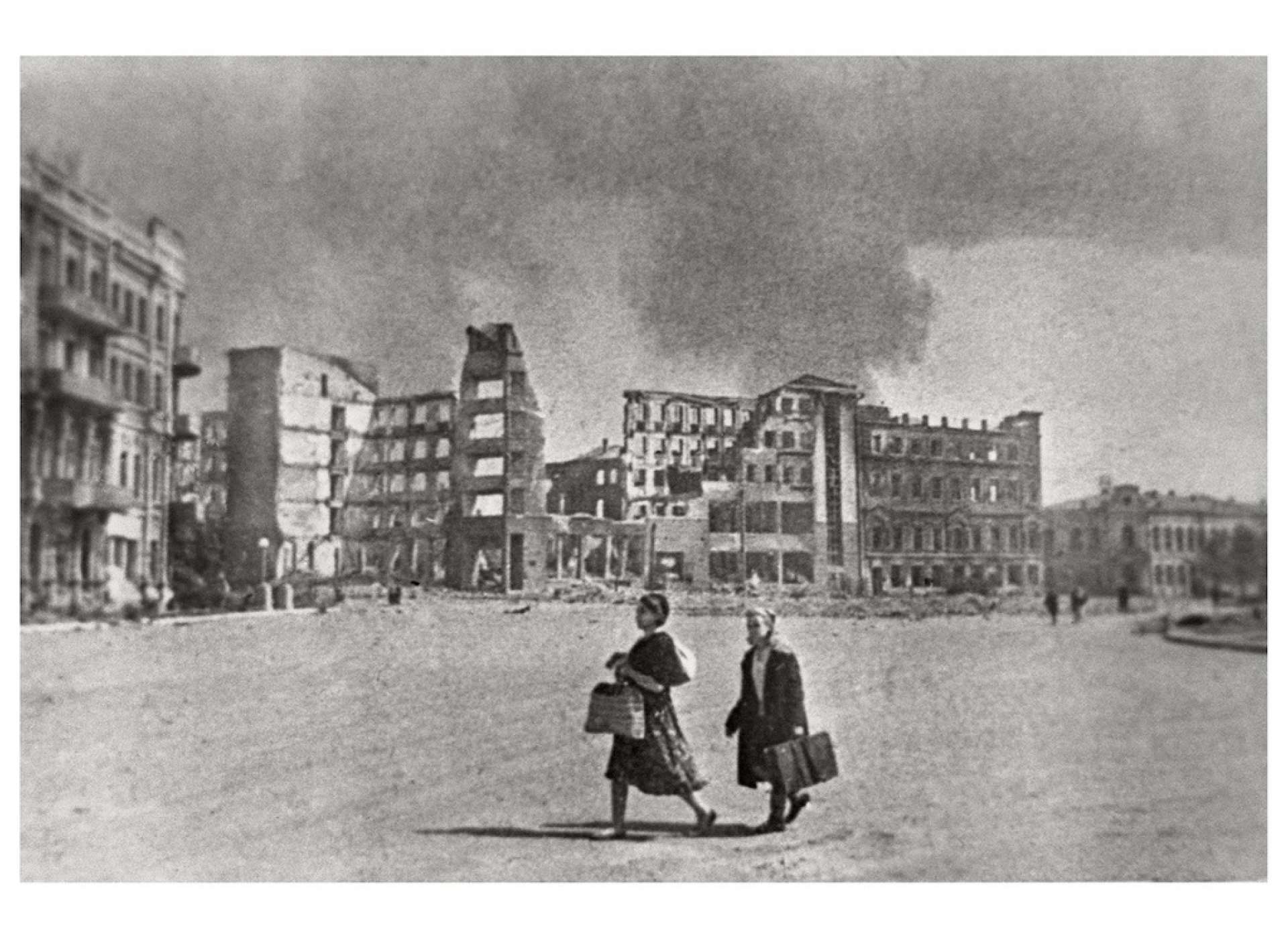
Stalingraders leaving the city, Emmanuil Evzerikhin, 1942. Source: PICRYL/Public domain
After the initial chaos, the authorities began a wholesale removal of civilians across the Volga, which continued until mid-September. Even then, women, children and the elderly fared worse than other groups of citizens deemed more useful by the state: like the wounded and men of draft age, engineers and other specialists, as well as the party leadership. Though city administrators later tried to give an impression of a well-organised and well-planned evacuation, eyewitness accounts paint a different picture of the exodus: it was chaotic and horrifyingly costly.
The crossings were constantly bombed and strafed by German pilots. Soviet soldiers coming from across the river met a heart-breaking sight: masses of desperate people gathered at the ferries amid piles of belongings, dead bodies in the water and on the river bank, children screaming and crying looking for their parents, men seeing off their families. However, getting out of Stalingrad was only half the battle. Initially, there were no reception centres on the far shore. People were simply dumped on the sand and left to fend for themselves. The sight of hungry, disoriented children begging for bread unnerved servicemen heading for the burning city. Things improved somewhat once the authorities became aware of the situation.
Having witnessed or heard of the harrowing stories of the crossing and the uncertainty awaiting them beyond the Volga, many Stalingraders decided against any attempts to leave the city. Women with many children or those caring for sick family members dreaded abandoning their homes, especially with winter drawing near. Elderly residents often succumbed to fatalistic indifference, while others dismissed reports of German atrocities as exaggerations. Faced with the probability of dying during the crossing or afterwards versus weathering the battle in the city, many chose the latter.
Soviet literature later claimed that all remaining residents elected not to leave because they believed that Stalingrad would not be surrendered to the enemy and sought to provide maximum assistance to the front. While it is true that many people felt responsible for the fate of their city and country—after all, 75,000 Stalingraders would join the armed forces in various capacities during the battle—others had no choice but to stay put.
There were three other paths out of Stalingrad, which were almost as deadly as the river crossing: to the south into the unoccupied regions, or to the north and west, right into the enemy’s teeth. The start of street fighting within the city effectively cut off the way out. By mid-September, Stalingrad had turned into a battlefront, and a month later, six out of seven districts were completely or partially occupied by the Germans.
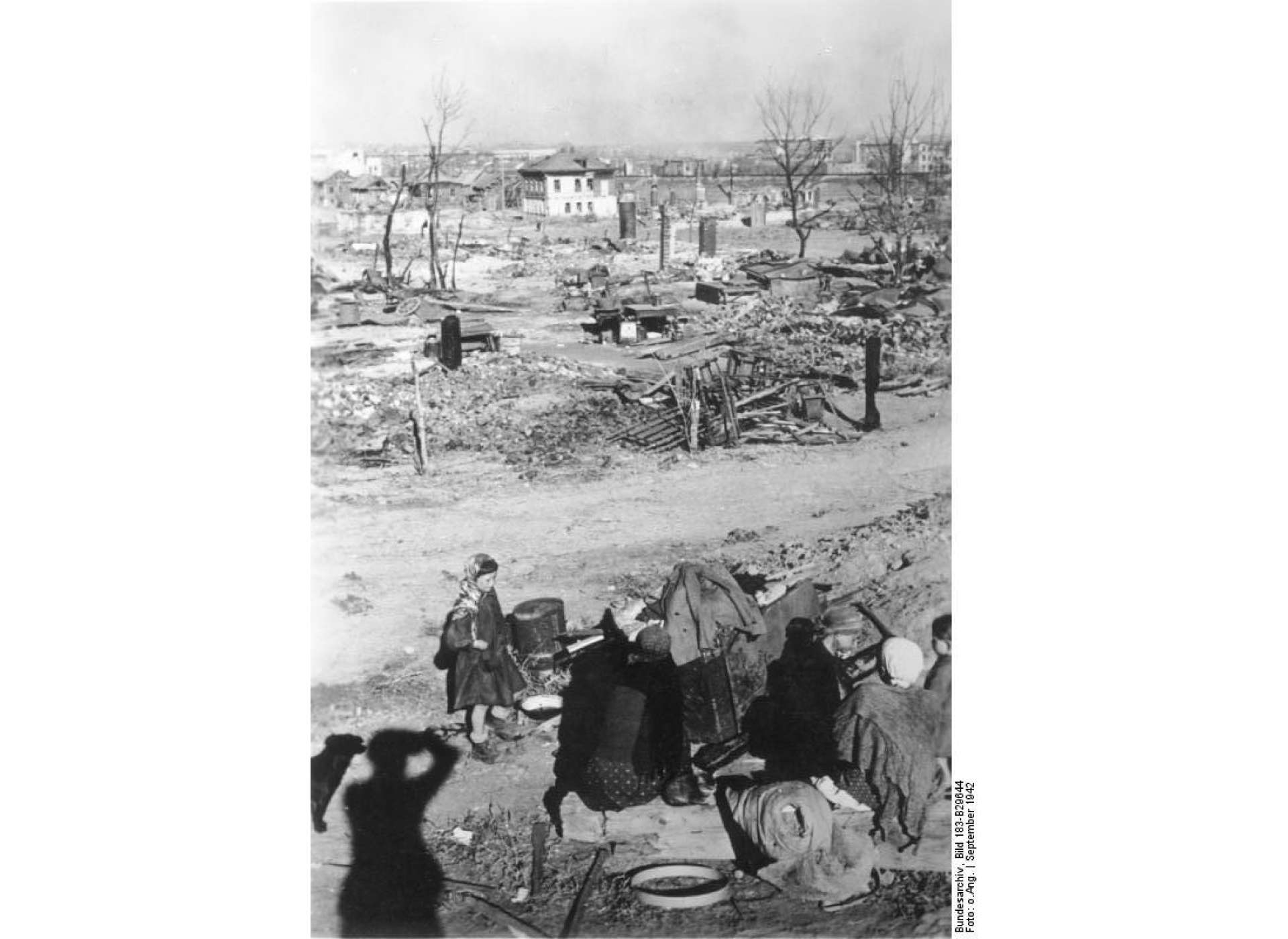
Stalingrad residents, 1942. Source: Bundesarchiv/Public Domain
The remaining residents moved into the city’s sewers and cellars. They were now totally at the mercy of the warring armies, with whom they frequently shared their living space: troops on the upper floors, civilians in the basements. Both sides would sometimes use them to perform menial tasks, like cooking, washing and tending to the wounded. Those living directly on the frontline or in the adjacent territory often had to look for new shelter, moving from place to place with their meagre belongings.
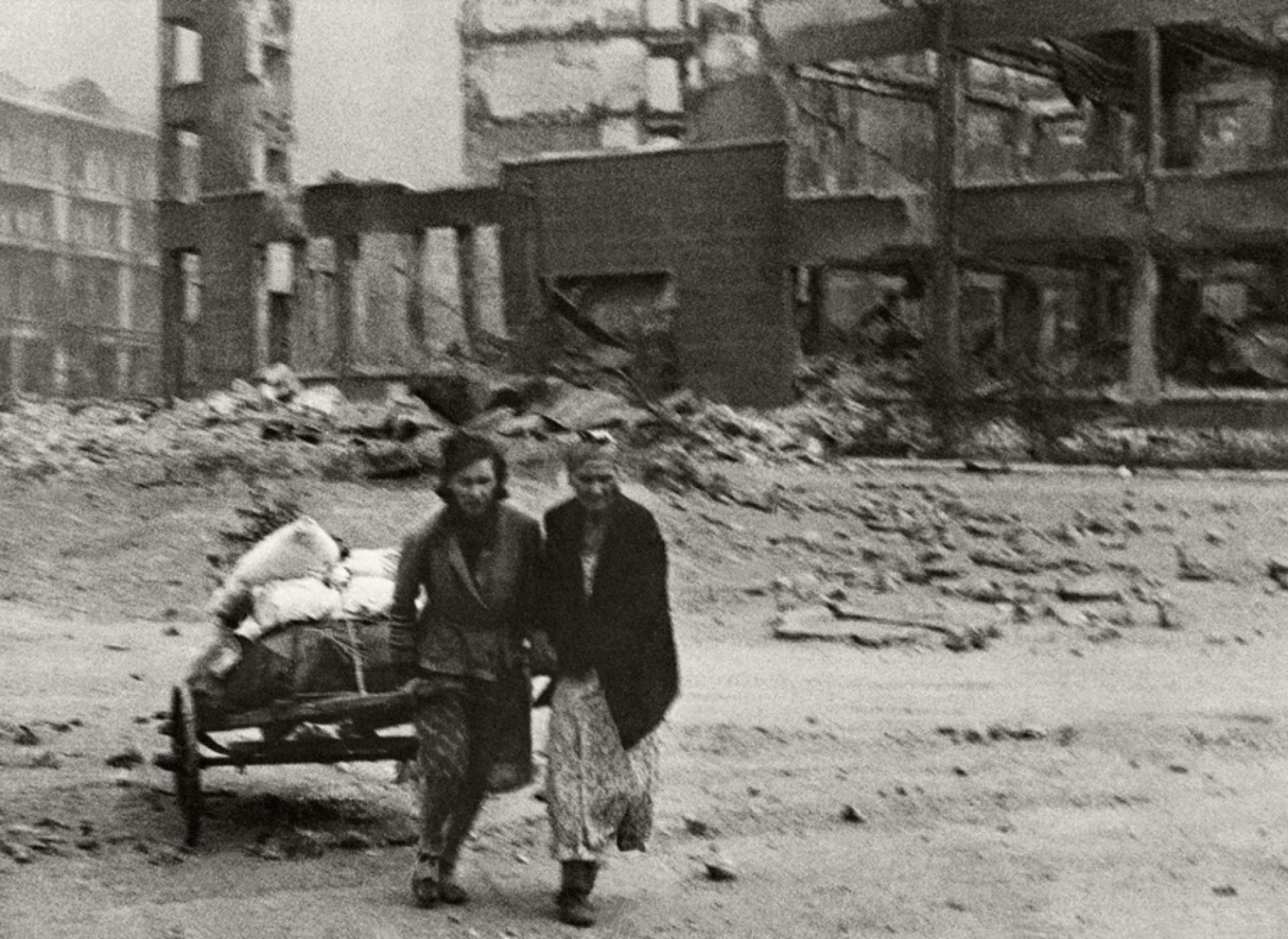
Stalingraders, Emmanuil Evzerikhin, 1942. Source: МАММ/МDF
In an extreme situation in the ruins of Stalingrad, deprived of supplies indispensable for sustaining life, the civilian population had to adopt quickly to their new environment. They would band together to assure mutual survival, changing their eating patterns from day to night-time, and dressing to make themselves less visible among the ruins—and in case of young women and girls, less attractive to enemy soldiers (some tricked their armed neighbours by also shaving their heads and feigning contagious diseases). Stalingrad children remember being made to wear layers of heavy clothing, even on warmer days to shield them from the outside hazards. Bartering, scavenging and grave-robbing were the usual ways to get clothes, though some people believed it irreverent to strip corpses littering the streets and buildings of the burnt city.
Though finding a sturdy shelter and appropriate clothing was a difficult undertaking in its own right, procuring food and, especially, water often turned into a highly dangerous venture. Thirst, according to those who remained in Stalingrad, was much harder to endure than hunger. But getting water carried serious risks and could turn lethal. With the water supply system destroyed, residents would take water from wells, springs, or directly from the Volga. Sometimes one had to wade several kilometres under shelling to the nearest water source, which was often contaminated with machine oil, blood or corpses.
Food procurement could turn as deadly. Things had been difficult with food provision in Stalingrad before the battle commenced because of the increasing number of refugees from outside the city. Evacuation of grain, flour, and cattle further depleted the stocks, and marauding crowds carried away much of what was left in the wake of the bombing campaign at the end of August. Now, everything that was edible was considered fit for consumption: weeds, berries, small rodents, leather goods, starch glue, even clay and silt from the river. Families living in combat zones would organise search parties to look for food, sometimes days on end. Not everyone would make it back. Grain was the most important food source. It was extracted from sunken barges, picked up from the wreckage of train cars or stolen from the Grain Elevator, which finally fell to the Germans at the end of September. Starving civilians risked their lives to obtain some of its contents. The main pilferers were children, who were less of a target due to their small size and agility.
Both armies noticed an incredible number of youngsters roaming the streets of Stalingrad. Foraging and begging for food was their chief preoccupation. Owing to their young age, they often carried out these traditionally adult functions better than their elders, especially when it came to establishing relations with soldiers. They often attracted less suspicion and stirred sympathy in men holding on to the memory of their own children or younger siblings. The youngsters would make their way under heavy shelling to Red Army field kitchens, where they could get food. Sometimes, enemy soldiers also took pity on the young beggars; though, just as often, they would amuse themselves by scaring the children with guns and shouts, or throw them morsels and laugh as they squabbled on the ground.
As the battle dragged on, the enemy began competing for food and clothing with the civilian population. Sometimes, they would literally fight women and children for provisions or warm blankets. Witness accounts paint enemy soldiers as savages, who “would take anything and everything they came across.” That said, altercations with Soviet soldiers were not unheard of, either—be it about food or mistrust.
Neither side could resist seeing civilians as useful assets. Before long, they began to be employed as saboteurs, spies, messengers, or auxiliary workers helping clear the area of putrid corpses or fetching water from the river. Whether acting under duress, doing so willingly or out of necessity, non-combatants put themselves in great danger, for soldiers on both sides were given orders to shoot those crossing the frontline.
Fear of saboteurs and spies was one of the reasons why in mid-October the Germans and the Soviets launched a wholesale evacuation of civilians from their areas of operation. Having occupied most of Stalingrad, the Germans found themselves in charge of a quarter of a million local residents, who needed to be removed from the combat zone. What came next fell perfectly in line with Hitler’s previous orders to depopulate Stalingrad by deportation and murder. The operation swiftly turned brutal and caused acute suffering. Every day, up to ten thousand Stalingraders were driven out of the city on foot further west, where they would be left to their own devices, collected in camps with no provisions made for them, or forcibly recruited for slave labour. Some managed to escape, making their way back to the city. By the end of the year, no more than fifteen thousand civilians remained in the German-occupied zone of Stalingrad.
Non-combatants presented an obstacle for the Soviet forces as well: those remaining in the city impeded the conduct of military operations, as they roamed the rubble in search of food, and could be employed by the enemy for intelligence gathering. To minimise the risks, the army was given orders to apprehend and evacuate all the civilians in the area. Not all went quietly. Fearful of what awaited them on the baren eastern bank of the Volga, they would plead with the troops to leave them be. Some had to be led to the ferry with an armed escort. The army’s efforts, however, were only partially effective. While many had indeed been evacuated, some people never crossed the river and ended up living in the dugouts peppering its western bank; others made themselves useful. Those who knew Stalingrad well, especially its sewer system, and could act as guides, were considered particularly valuable.
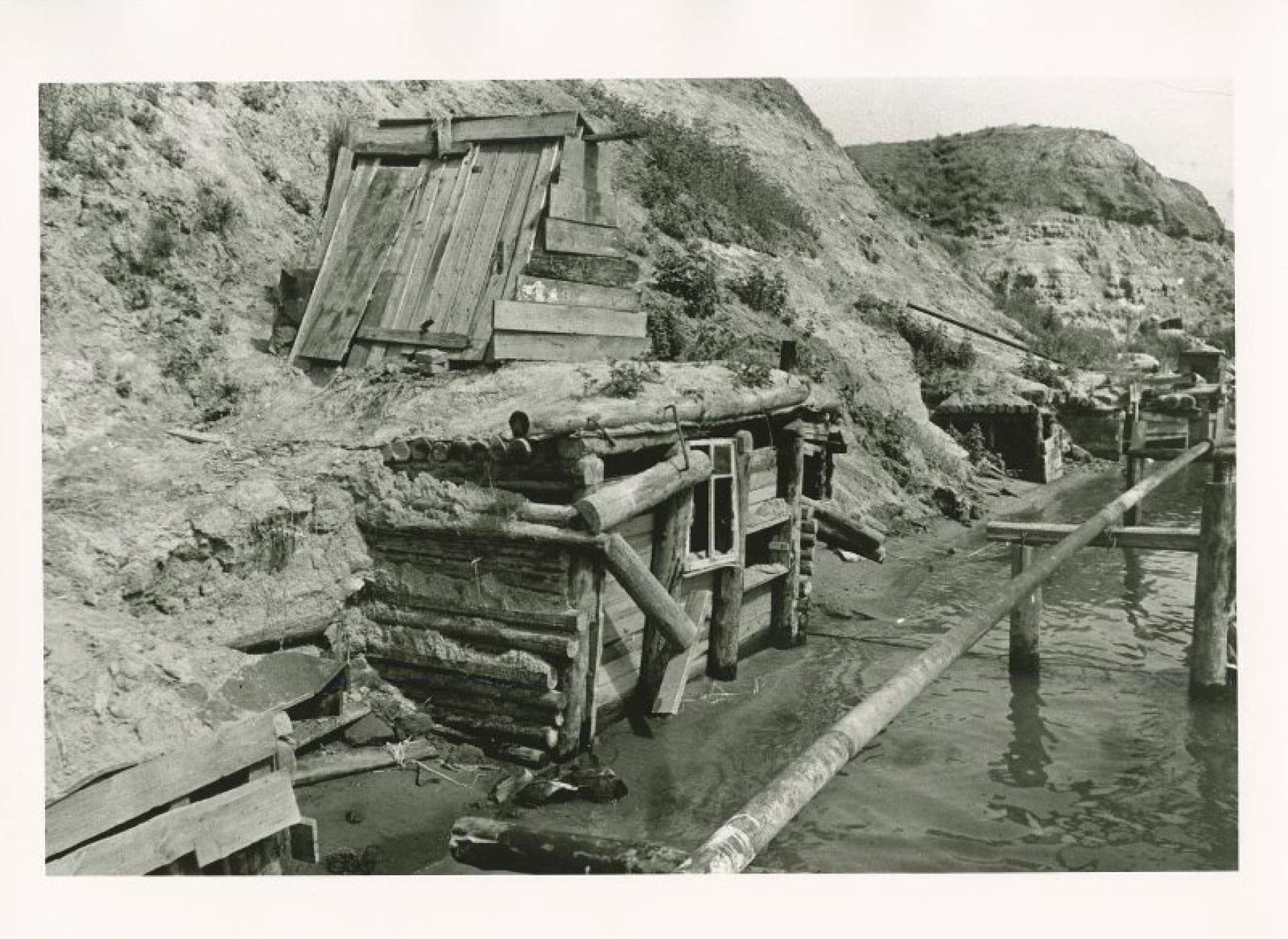
Stalingrad’s Dwellings, Evgenii Umnov, 1944. Source: МАММ/МDF
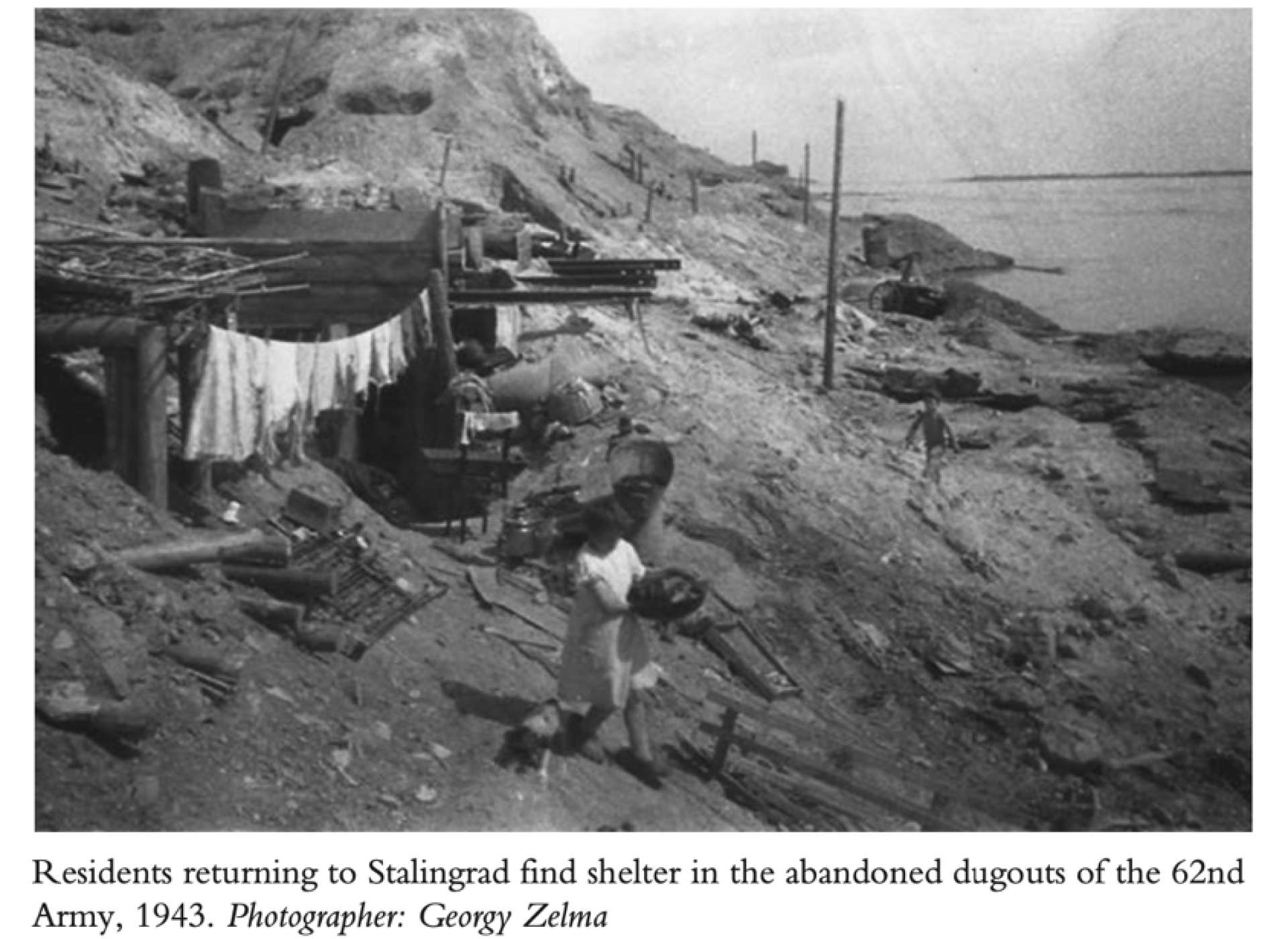
The 13th Guards Rifle Division, in whose sector the evacuation measures were carried out, swelled with civilian helpers—many of them children. The division boasted a dozen underaged wards, who carried out various tasks, like bringing provisions or ammunition to forward positions, entertaining soldiers, looking after the wounded and delivering mail. Some of these children would follow the division out of the city as it made its victorious way westwards in the winter of 1943. Their contribution to the battle would be inscribed in the annals of history. Many of their neighbours were not as fortunate.
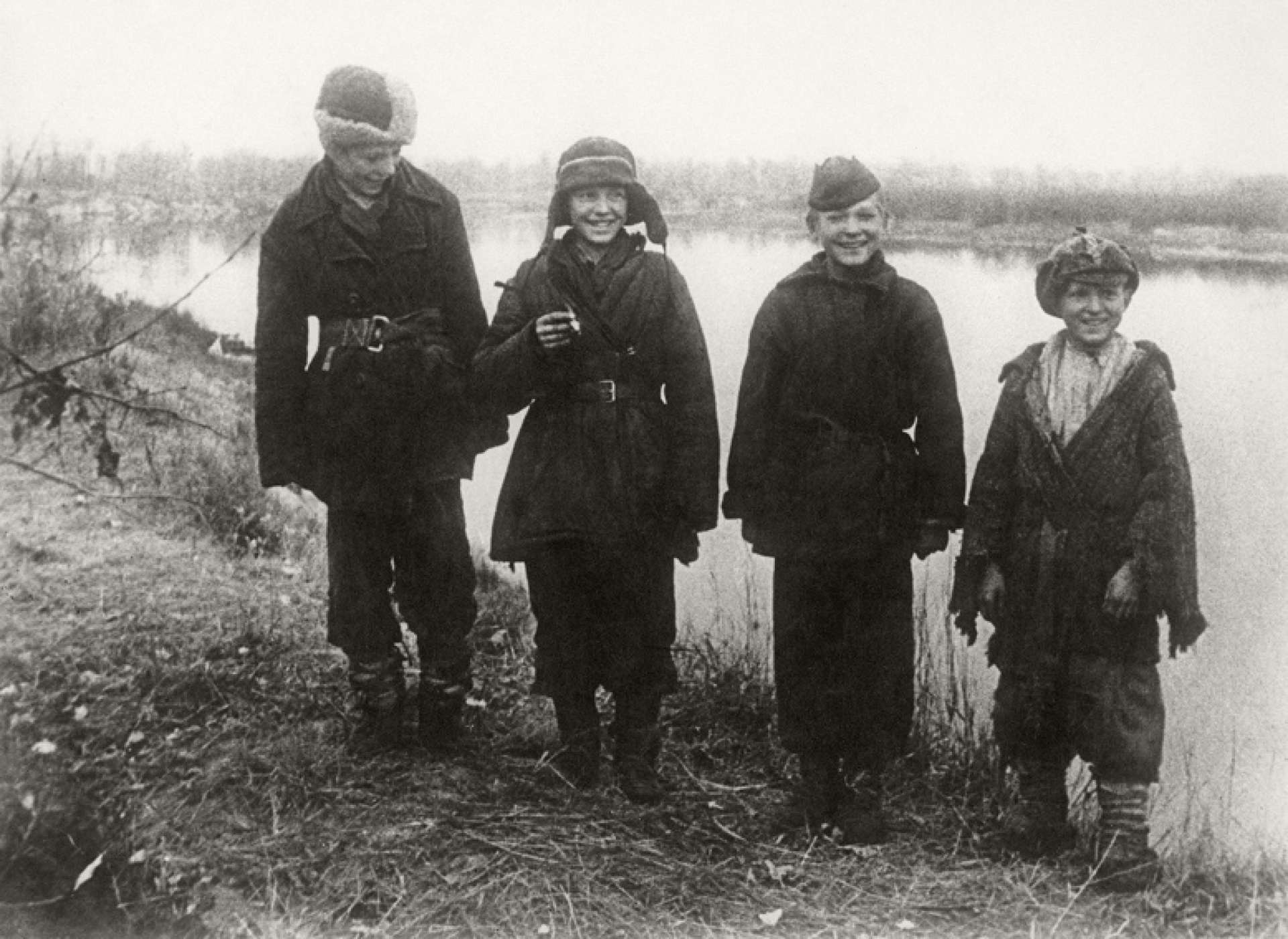
Children of War, Anatoly Lindorf, 1943. Source: МАММ/МDF
As the war moved out of Stalingrad in the spring of 1943, a new battle commenced to restore the devastated city. Remembering Stalingrad as the place of fountains and maple trees, the returning residents now christened it “the City of the Dead.” By the end of May, the streets were cleared of 200,000 bodies of servicemen, both Soviet and enemy, as well as 12,000 animal carcasses. Stalingrad itself was so badly damaged that some proposed to build a new city elsewhere and leave the ruins as a memorial to the battle.
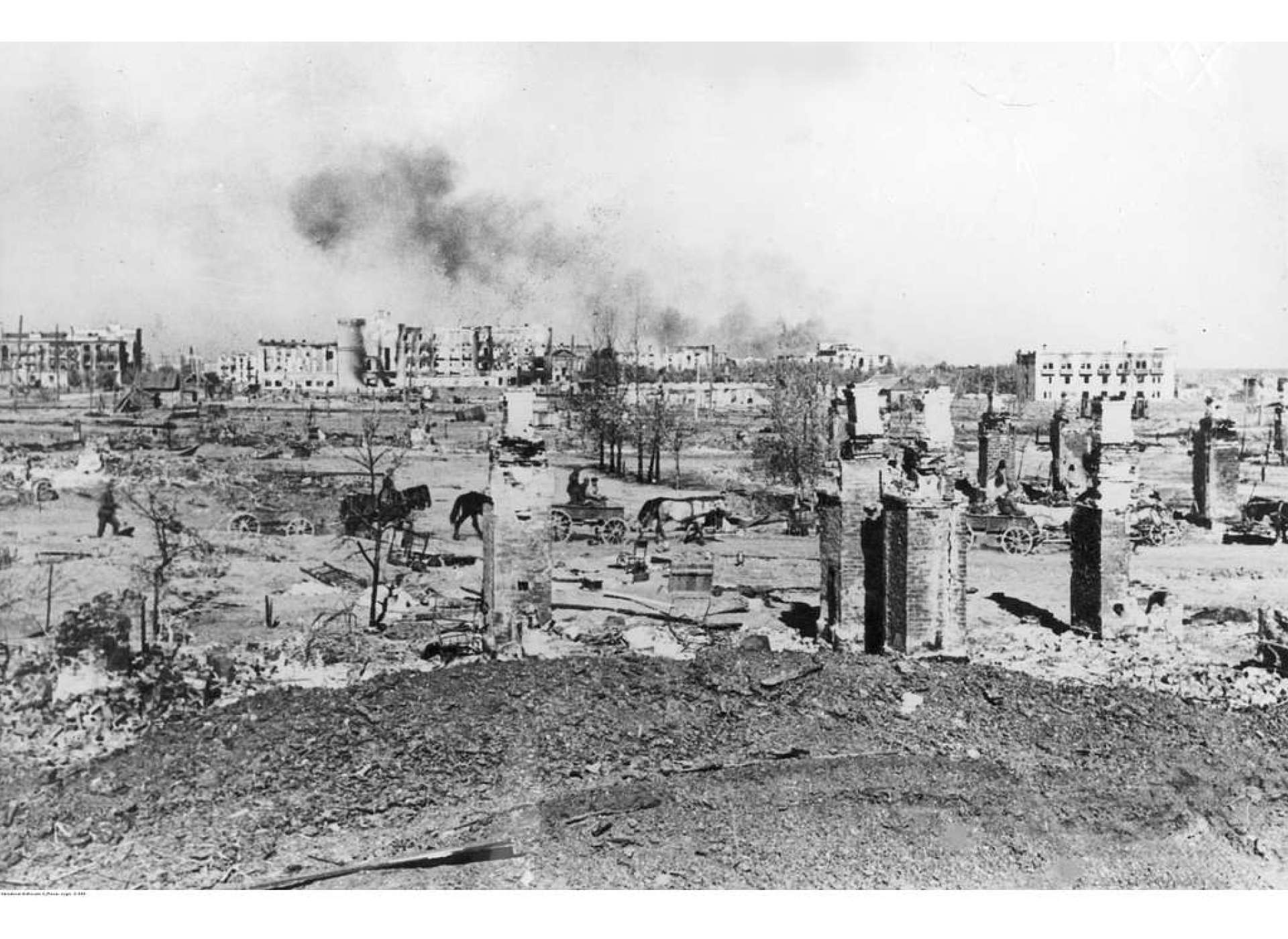
Destroyed Stalingrad, 1943. Source: PICRYL/Public domain
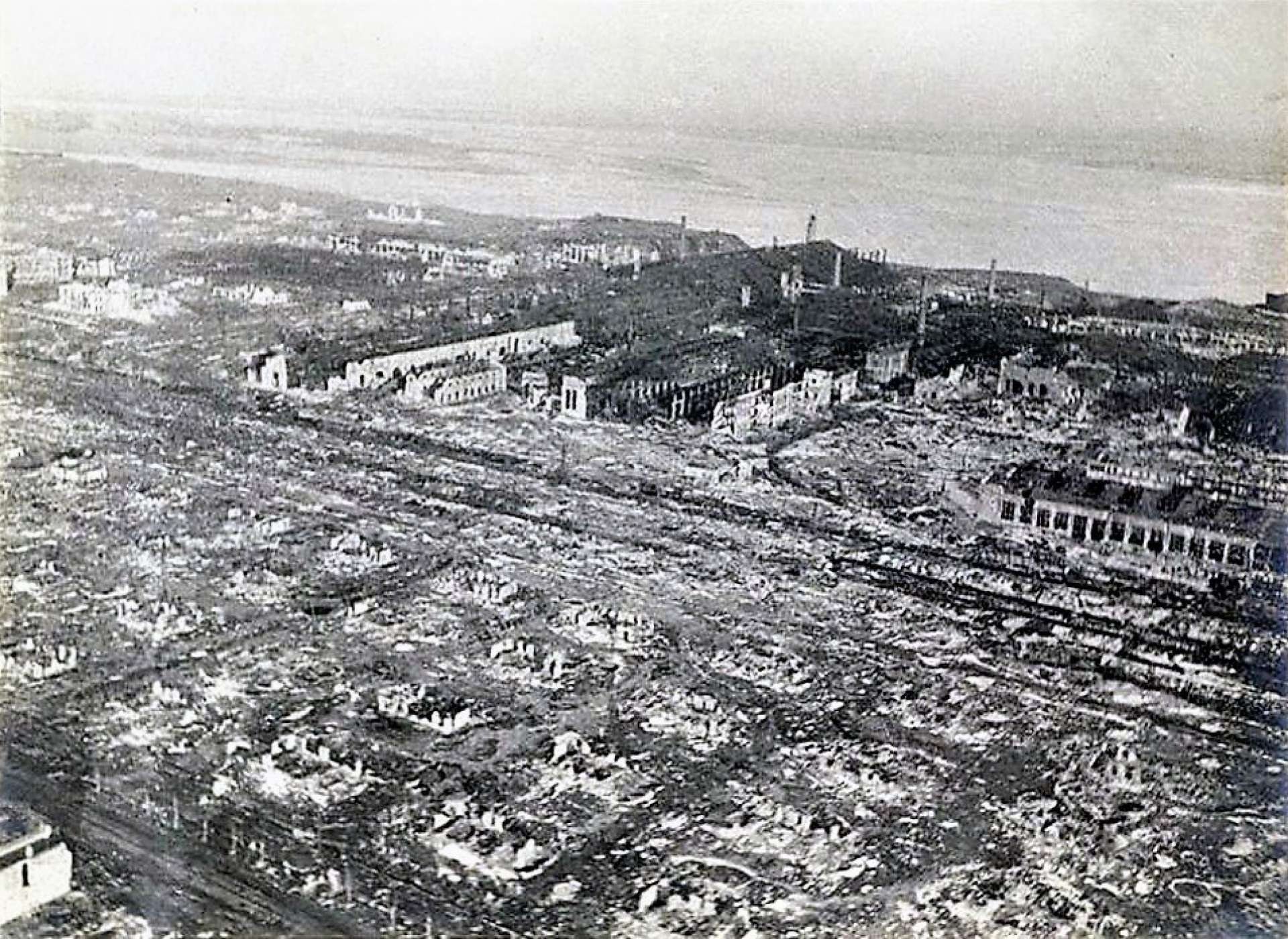
Destroyed Stalingrad, 1943. Source: Source: PICRYL/Public domain
For the authorities, this was out of the question. Stalingrad used to be a major industrial center, and the most pressing goal now was to restore and relaunch its industry to ensure a continuous supply to the frontline. So, all the energy was channelled into making it happen as quickly as possible. The burden of restoration initially fell on local women and teenagers who would organise work details after school and working hours. Their initiative was popularised throughout the country, and volunteers from other regions began pouring in, together with trainloads of humanitarian aid and construction materials, some of which came from the Western Allies.
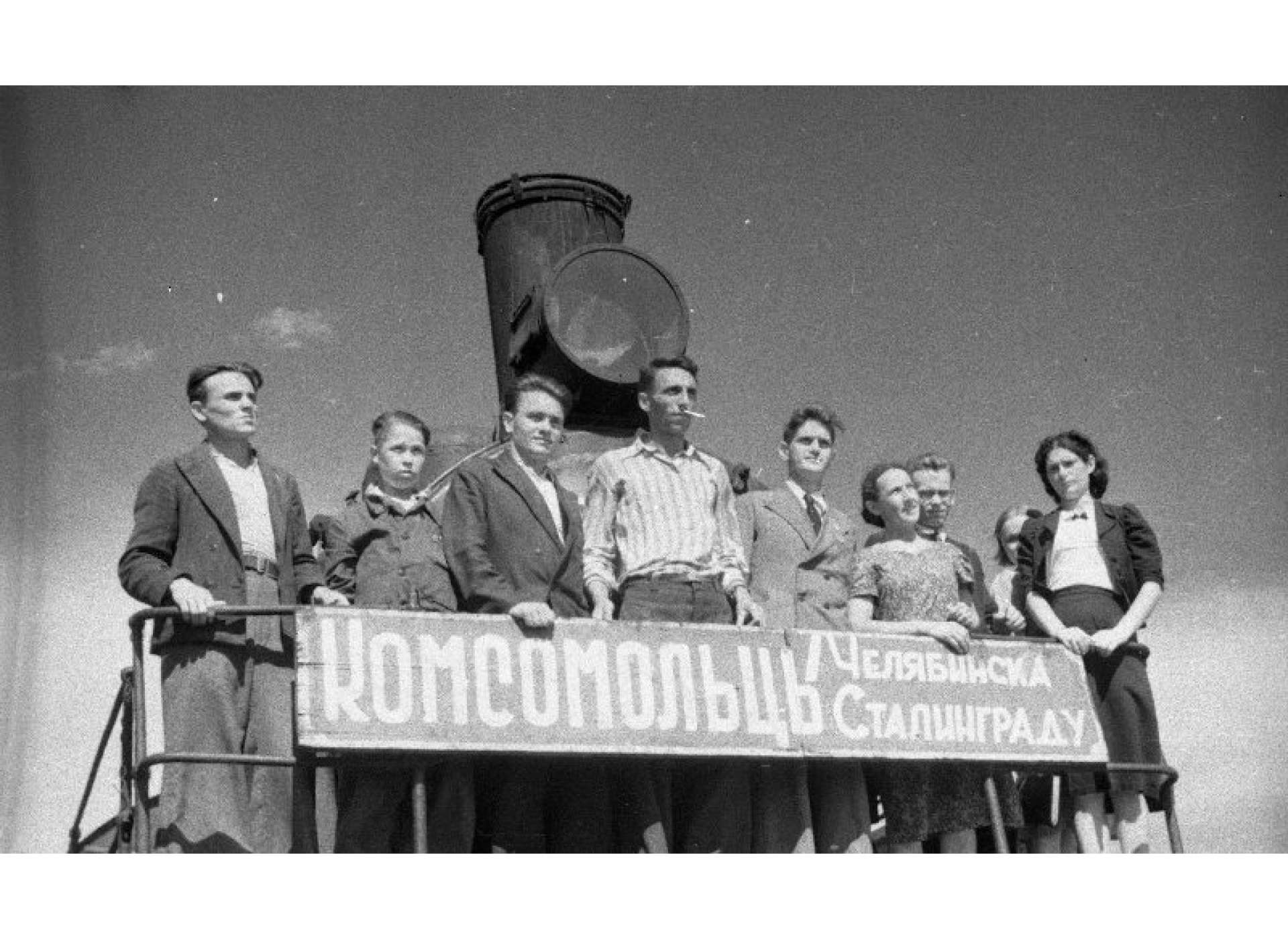
Komsomolites of Chelyabinsk arriving in Stalingrad, Vladislav Mikosha, 1943. Source: МАММ/МDF
Restoring the physical damage to the city took a long time but reversing the psychological effects of the battle on the civilian population proved to be a much more arduous task. Doctors and the survivors themselves noted a marked difference between them and the newcomers, who were not only better-dressed and better-fed but also well-adjusted and less prone to neuroses. Conversely, common ailments among Stalingraders, particularly children, were dystrophy, speech disturbances, deaf-mutism and aloofness. Many also suffered from debilitating nightmares, anxiety and depression, frequent crying spells, and restlessness. And there were reportedly cases of stress-related infertility among young women. But there was no public discussion of the psychological consequences of war. With most of the limited resources thrown to treat combat trauma in servicemen to return them to the ranks as quickly as possible, psychiatric help for civilians outside of the capital cities of Moscow and Leningrad was rudimentary at best. The most popular form of rehabilitation was proper nutrition, active participation in socially meaningful work and activities designed to heighten morale.
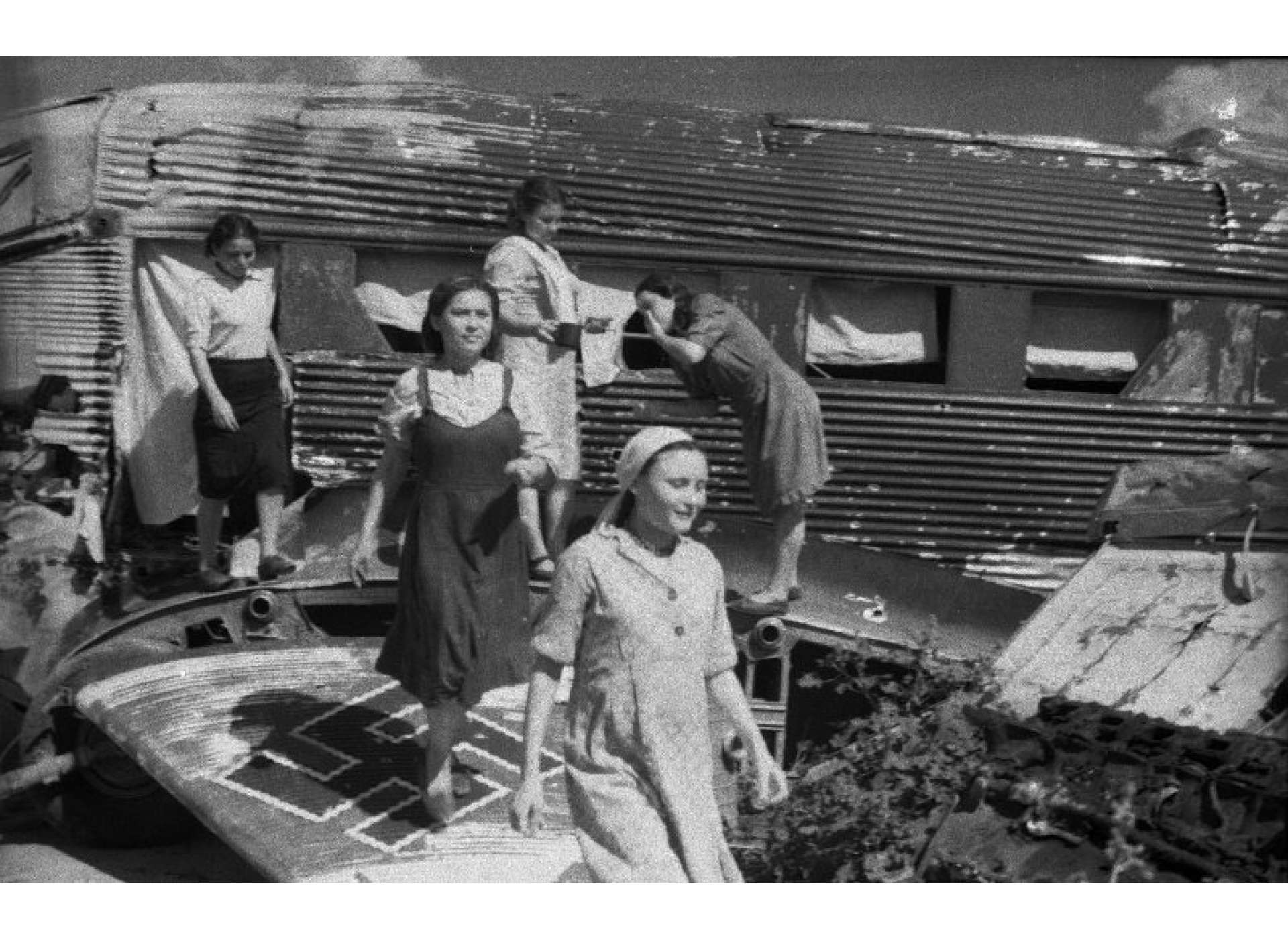
Temporary dwelling in Stalingrad, Vladislav Mikosha, 1943. Source: МАММ/МDF
Thus, the mass involvement of Stalingraders in the reconstruction drive had a therapeutic function. Their work was infused with ideological meaning to prevent them from dwelling excessively on their individual suffering and instead to concentrate on mass heroism in the face of extreme adversity. With the rhetoric of resilience all pervasive, distressed people felt reluctant to draw attention to themselves for fear of being accused of egocentrism—a serious moral transgression in the Soviet worldview. Besides, with acute shortages of the most basic necessities, there was no time for self-examination, especially among adults, who were instead preoccupied with their families’ everyday survival. War was simply not discussed at home; neither were individual experiences talked about elsewhere. Even at school, the opportunity to do so was quickly curtailed. Initially, Stalingrad children were given assignments to write essays about their wartime experiences, but the rapid ideologization of the battle left no space for introspection and instead offered ready-made patterns of expression, like writing compositions about heroic deeds of other people. The war could only be discussed in the context of heroism and endurance. Just as Stalingraders emerged from under the ground, their private pain was buried in their subconscious.
There was a much darker reason as to why those Stalingraders who survived the battle were so reluctant to discuss it in a non-officially prescribed manner. It was fear. The very presence of civilians in the city which had officially been evacuated, aroused suspicion. Those people who found themselves in the occupied territory particularly—which was the reality for the majority of those who stayed behind—feared attracting attention. And for good reason. Together with clearing the streets of rubble, city authorities began “cleansing” the city’s population of traitors. Residents were screened for their past disloyalty and those who failed the test got prosecuted. Local children remember being ostracised by newcomers, who were allowed to join the Communist Youth League and wear red kerchiefs of the Young Pioneers, while their classmates who spent the battle months in Stalingrad were sidestepped. To avoid the stigma attached to anyone who had been in the occupied territory or concentration camps, people kept this information to themselves lest their careers, family, or livelihood suffered. Parents forbade their children on pain of punishment to divulge anything about their past.
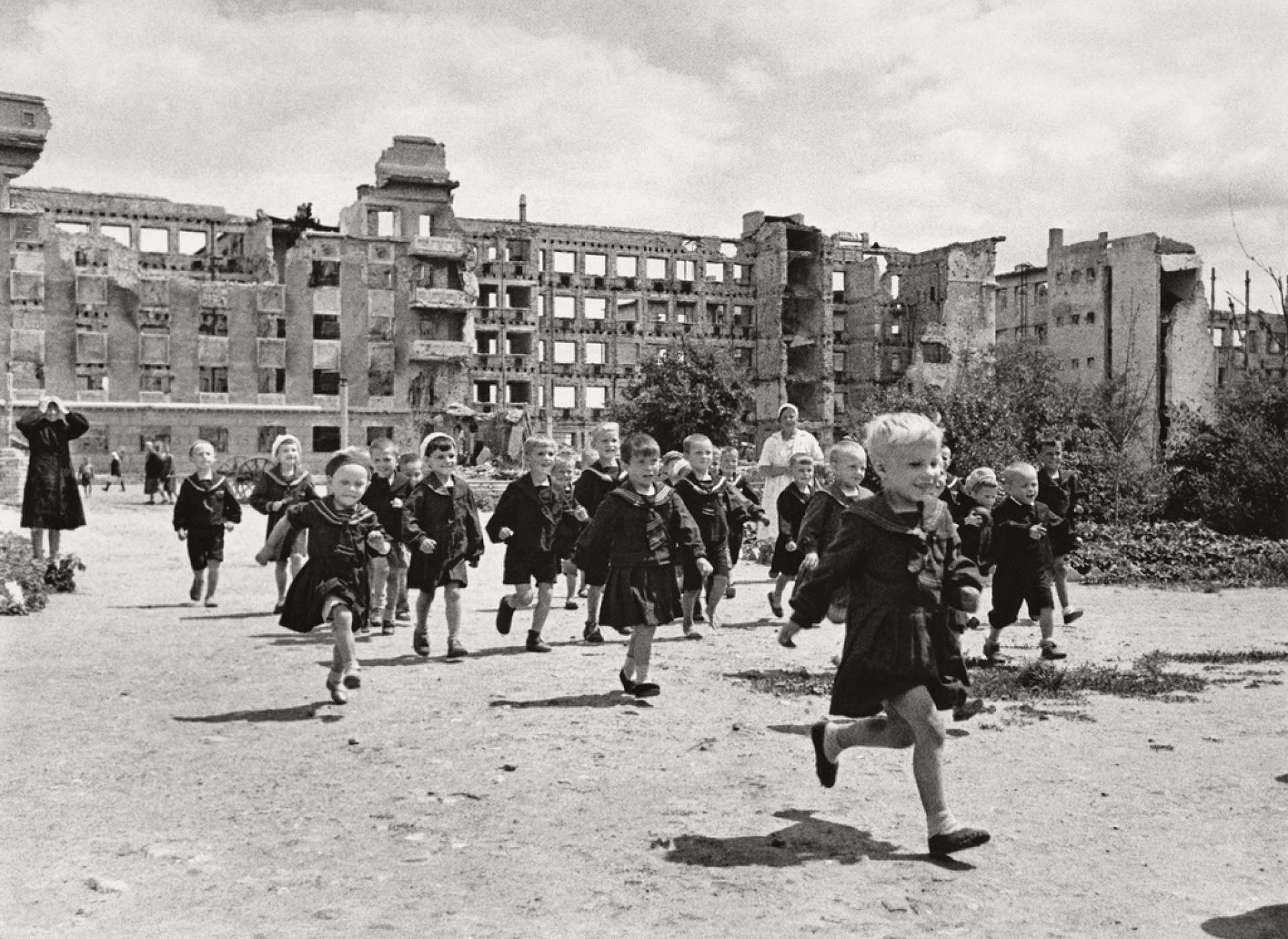
Children of Stalingrad, Evgenii Umnov, 1944. Source: МАММ/МDF
And they kept quiet: first because of fear and later because their stories did not fit the official narrative. The myth of the city-turned-fortress did not provide for the presence of a civilian population in it. The ideological pressure was so strong that survivors felt their story was trivial or somehow damaging to the accepted image of the Battle of Stalingrad. Their experiences were less about heroics and self-sacrifice, and more about the realities of life in a war zone—which, incidentally, was also full of examples of astonishing human endurance and perseverance.
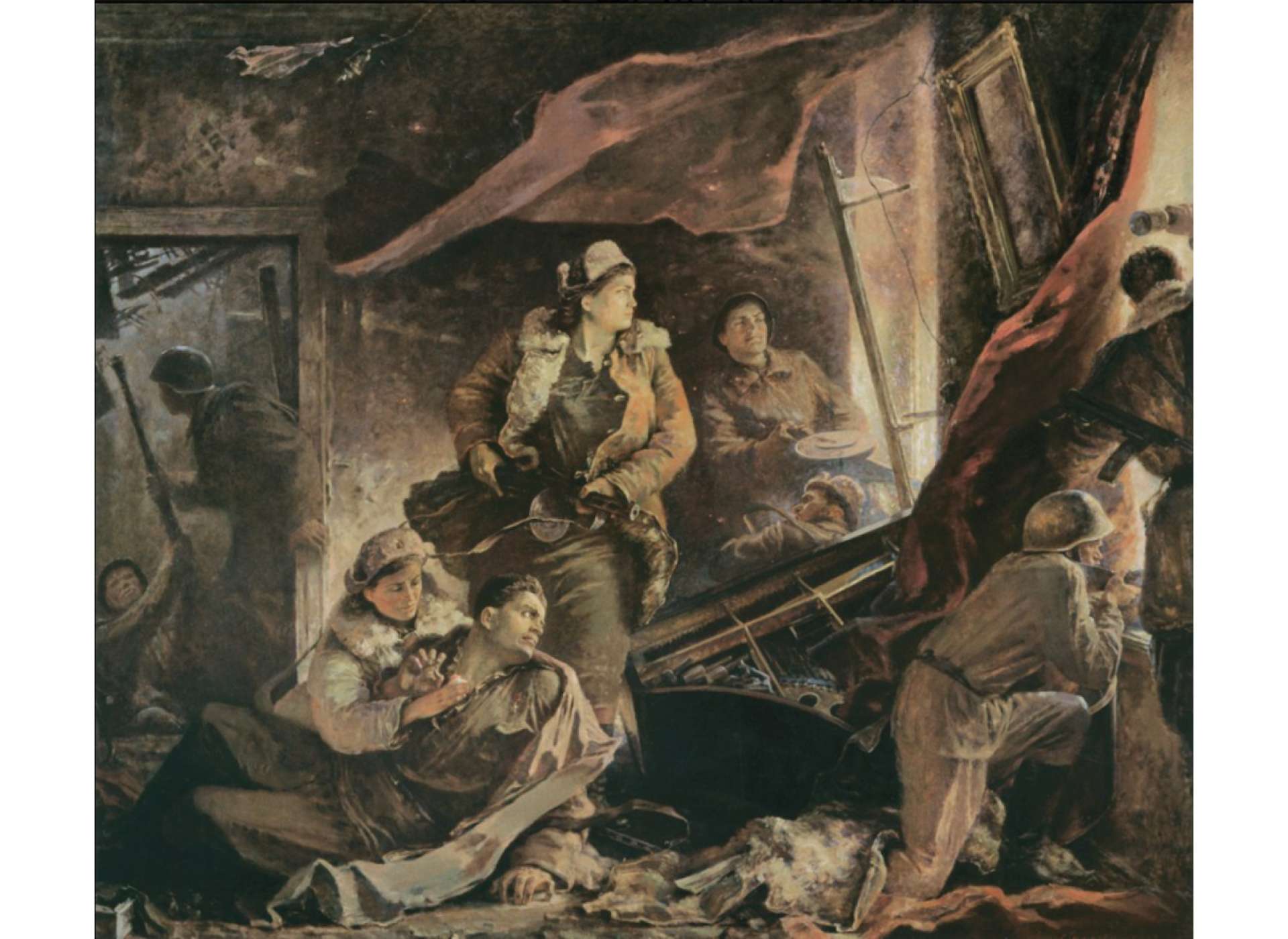
Memorialisation of the battle: A.N.Samokhvalov, Stalingraders (1947), Russian State Museum (https://rusmuseumvrm.ru/data/collections/painting/19_20/zhb-966/index.php)
Olga Kucherenko
Olga Kucherenko is a specialist in the socio-cultural history of the Second World War with an interest in conflict-based propaganda, everyday life in wartime and allied relations.
Cite this article:
MLA Citation:
APA Citation:
Chicago Style Citation:
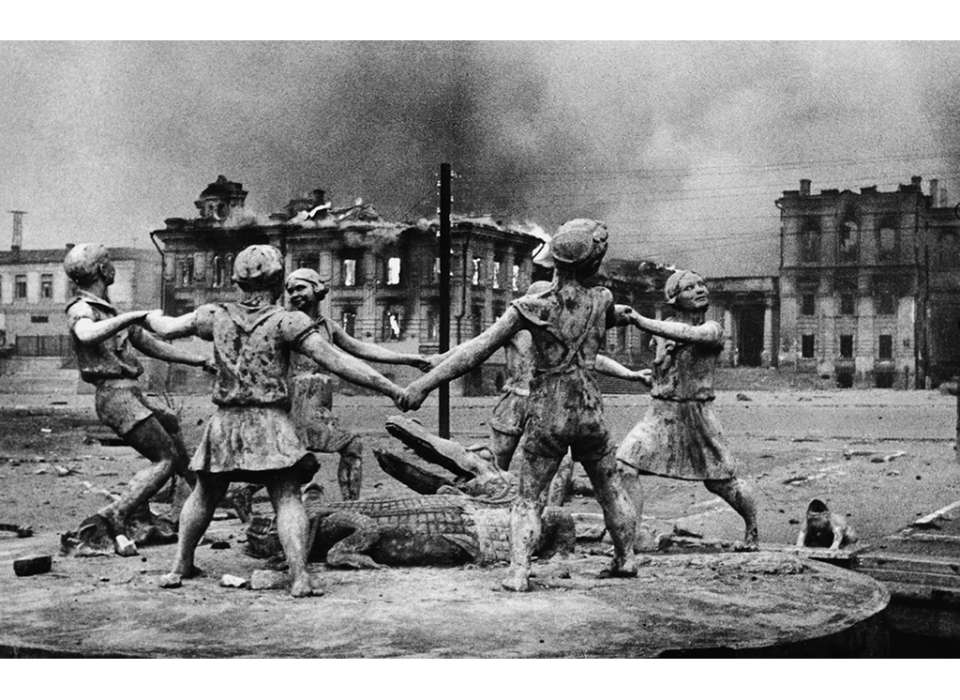




![Max Fuchs, New York City cantor, sings as Rabbi Sydney [sic] Lefkowitz, Richmond, VA, conducts the first Jewish services from Germany.](/sites/default/files/styles/max_650x650/public/2025-10/image1.jpg)



